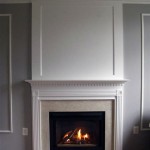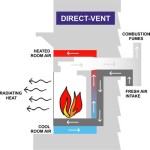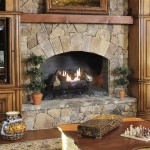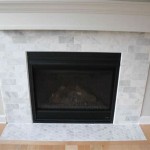Here's an article on fireplace mantels for flat-screen TVs, designed to be informative and comprehensive:
Fireplace Mantels for Flat Screen TVs: Integrating Technology and Tradition
The integration of flat-screen televisions into living spaces has presented a design challenge: how to seamlessly blend modern technology with established architectural features, particularly the traditional fireplace. A fireplace mantel, historically a focal point for gathering and display, requires careful consideration when incorporating a television. This article examines the key factors in selecting and installing a fireplace mantel that effectively accommodates a flat-screen TV, considering aesthetics, safety, and functionality.
The pairing of a fireplace and a television is a common desire for homeowners. The fireplace often serves as the center of a room's design, providing warmth and a sense of comfort. A television, in turn, is essential for entertainment and relaxation. The challenge arises in harmoniously incorporating both elements without one detracting from the other. A well-chosen mantel can serve as the bridge, unifying the fireplace and television into a cohesive design.
Before selecting a mantel, it's crucial to address safety concerns. Heat generated by the fireplace can damage electronic components, potentially leading to malfunction or failure of the television. Therefore, understanding the heat output of the fireplace (whether gas, electric, or wood-burning) is paramount. The distance between the fireplace opening and the television, as well as any shielding or ventilation provided by the mantel, must be adequate to protect the television from excessive heat exposure.
Furthermore, electrical wiring and cable management are critical considerations. Running power cords and HDMI cables can be unsightly and pose safety hazards if not handled properly. Installing the appropriate electrical outlets and cable conduits behind the mantel and within the wall is essential for a clean and organized appearance. Professional installation is often recommended to ensure compliance with building codes and safety standards.
Choosing the Right Mantel Style and Material
The aesthetic appeal of the mantel is a primary factor in its selection. The ideal mantel should complement both the architectural style of the room and the design of the fireplace and television. Mantels are available in a wide range of styles, from traditional to contemporary, and are constructed from various materials, each offering distinct advantages and disadvantages.
Traditional mantels often feature ornate carvings, intricate moldings, and classical details. These mantels are typically made from wood, such as oak, maple, or cherry, and are stained or painted to match the existing trim and décor. While traditional mantels can add a sense of elegance and sophistication to a room, they may not be suitable for more modern or minimalist designs. If a traditional mantel is chosen, consider how the television's sleek, modern design will contrast and whether the overall effect will be aesthetically pleasing.
Contemporary mantels, on the other hand, typically feature clean lines, simple shapes, and a minimalist aesthetic. These mantels are often made from materials such as concrete, metal, or glass, and are designed to blend seamlessly with modern décor. Contemporary mantels can be an excellent choice for modern homes, as they provide a neutral backdrop for the television without overwhelming the space. They can also be a good option for smaller rooms, as their streamlined design helps to create a sense of openness.
The material of the mantel also plays a significant role in its appearance and durability. Wood is a classic choice, offering warmth and versatility. However, wood is susceptible to moisture damage and can warp or crack over time if not properly maintained. Stone, such as marble or granite, is a more durable option, but it can be more expensive and may not be suitable for all architectural styles. Concrete is a popular choice for contemporary mantels, as it offers a modern look and is relatively low-maintenance. Metal, such as steel or aluminum, is another durable option that can add a touch of industrial chic to a room.
Ultimately, the choice of mantel style and material depends on personal preference and the overall design of the room. It's important to consider the size and shape of the television, as well as the size of the fireplace, when making a decision. A mantel that is too small will look inadequate, while a mantel that is too large will overwhelm the space. Measure the dimensions of both the television and the fireplace carefully before selecting a mantel.
Determining Optimal Viewing Height and Distance
Beyond aesthetics, the ergonomic considerations of viewing height and distance are crucial for comfortable television viewing. Mounting the television too high or too low can lead to neck strain and eye fatigue. Similarly, sitting too close or too far from the television can negatively impact the viewing experience.
The ideal viewing height is generally considered to be at eye level when seated. This means that the center of the television screen should be approximately at eye level. However, this may vary depending on the height of the seating and the size of the television. As a general rule, the larger the television, the higher it can be mounted without causing excessive neck strain.
To determine the optimal viewing distance, consider the size of the television screen. A common guideline is to multiply the screen size (measured diagonally) by 1.5 to 2.5 to determine the ideal viewing distance in inches. For example, if the television screen is 55 inches, the ideal viewing distance would be between 82.5 and 137.5 inches (approximately 7 to 11.5 feet).
When installing a television above a fireplace mantel, it's often necessary to mount the television higher than ideal to provide adequate clearance from the fireplace. In these cases, it's important to tilt the television downward slightly to improve the viewing angle and reduce neck strain. Adjustable television mounts are available that allow for tilting and swiveling, providing greater flexibility in positioning the television.
Before permanently mounting the television, experiment with different viewing heights and distances to find the most comfortable position. Use temporary supports to hold the television in place and sit in your normal viewing position to assess the viewing angle. Make adjustments as needed until you find the optimal position.
Addressing Heat Management and Ventilation
As previously mentioned, heat management is a critical consideration when installing a television above a fireplace mantel. Excessive heat can damage the television's internal components, leading to premature failure. Adequate ventilation is essential to dissipate heat and prevent it from building up around the television.
The type of fireplace plays a significant role in heat output. Wood-burning fireplaces typically generate the most heat, followed by gas fireplaces. Electric fireplaces produce the least amount of heat. Therefore, the type of fireplace will influence the amount of clearance required between the fireplace and the television.
Building codes often specify minimum clearances for combustible materials near fireplaces. Consult local building codes and regulations to ensure compliance. These codes may specify the minimum distance between the fireplace opening and the mantel, as well as the minimum distance between the mantel and any combustible materials above it, including the television.
To improve heat management, consider installing a heat shield above the fireplace opening. A heat shield is a non-combustible barrier that deflects heat away from the television. Heat shields are typically made from metal or stone and are designed to be installed directly above the fireplace opening. They can significantly reduce the amount of heat that reaches the television, helping to protect it from damage.
Proper ventilation is also essential. Ensure that there is adequate airflow around the television to dissipate heat. Avoid blocking any ventilation openings on the television itself. Consider installing ventilation fans behind the mantel to actively draw heat away from the television. These fans can be either manually controlled or automatically activated by a thermostat.
Monitor the temperature around the television regularly, especially during periods of heavy fireplace use. Use a thermometer to measure the temperature behind the television and above the mantel. If the temperature exceeds the manufacturer's recommended operating temperature for the television, take steps to reduce heat output or improve ventilation.
By carefully considering these factors, homeowners can effectively integrate flat-screen TVs with fireplace mantels, creating a comfortable and aesthetically pleasing living space that balances technological convenience with traditional design elements.

A Traditional Custom Fireplace Mantel With Flat Screen Tv Above Built By Premier Builders Architect Design Home Living Room

Placing A Tv Over Your Fireplace Design Ideas Classic Living Room Home White

A Tv Over The Fireplace Design Yes Or Major No

A Beautiful Classic Stone Fireplace Mantel Installation Looks Great With Mounted Flatscreen Above Design Designs

Can I Mount My Tv Above The Fireplace

Mantel Decorating With A Tv 10 Ideas And Tips Nina Hendrick

How To Hide Electronics On A Mantel

49 Exuberant S Of Tvs Mounted Above Gorgeous Fireplaces Home Fireplace Remodel

Installing A Tv Above The Fireplace

ᑕ❶ᑐ Myth Vs Reality Do Electric Fireplaces Ruin Tvs








